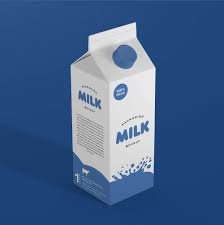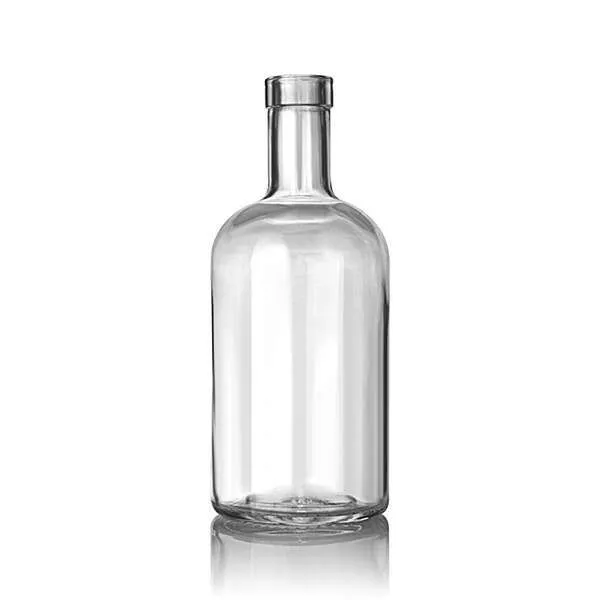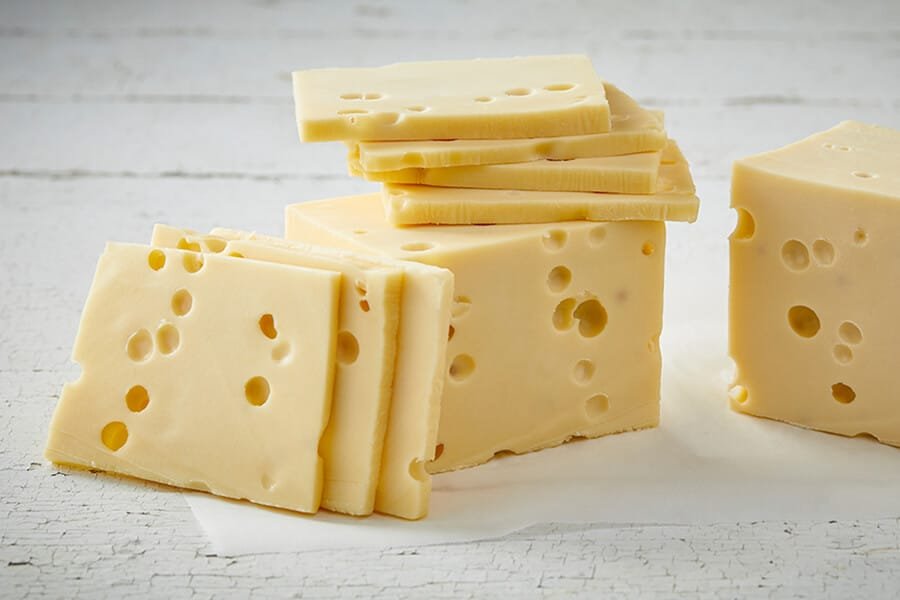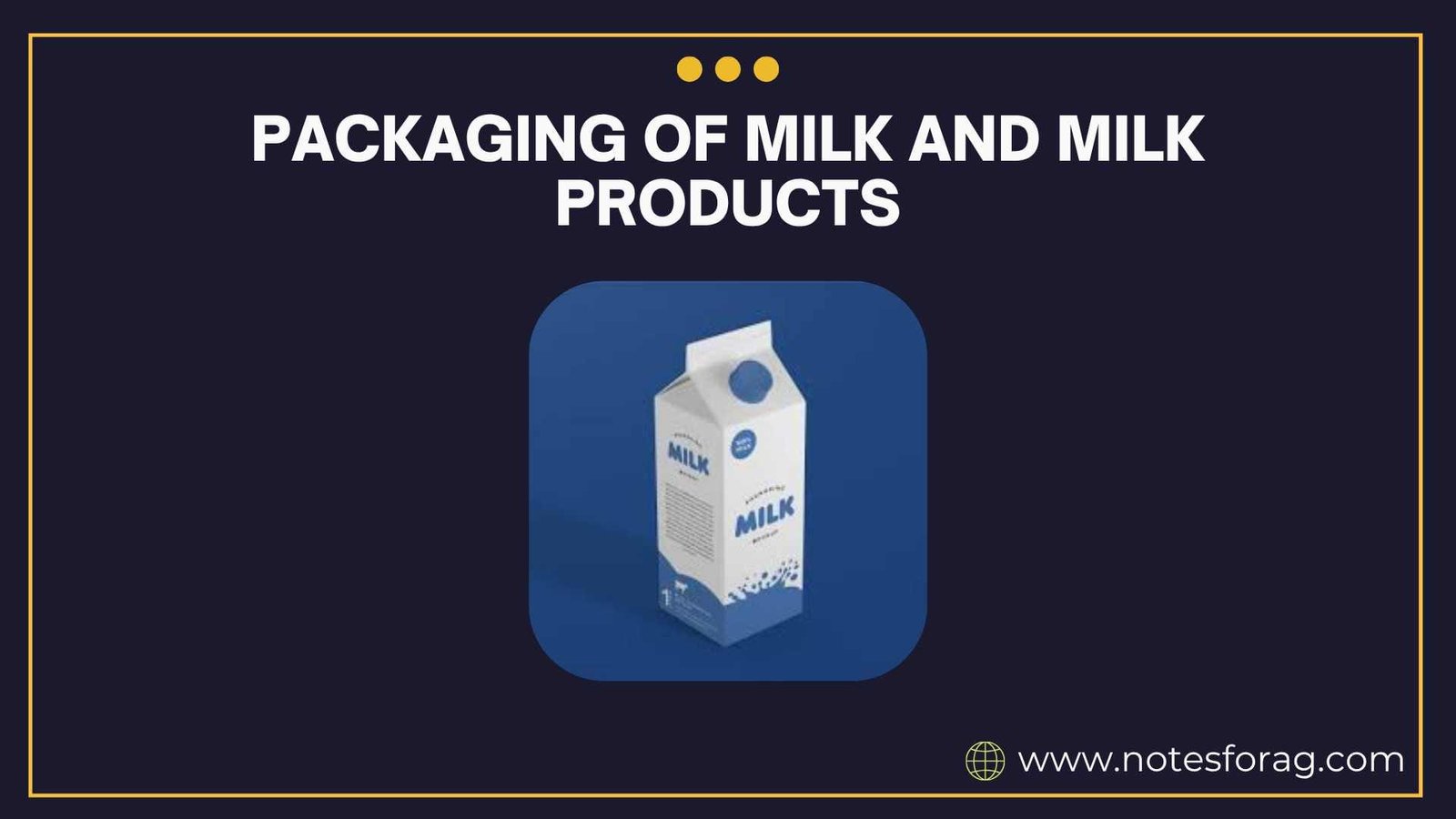INTRODUCTION

Milk Packaging and milk products plays a crucial role in ensuring their safety, hygiene, and extended shelf life. Proper packaging helps to protect dairy items from contamination, spoilage, physical damage, and exposure to light, oxygen, or moisture. With increasing consumer demand for convenience, freshness, and food safety, innovative packaging solutions have become essential for the dairy industry. It also helps in branding, product information display, traceability, and regulatory compliance.
Table of Contents
TYPES OF MILK PACKAGING MATERIALS
The types of milk packaging materials are,
Plastic Containers
Plastic is one of the most widely used packaging materials for milk due to its lightweight, flexibility, and low cost. High-density polyethylene (HDPE) and low-density polyethylene (LDPE) are commonly used in milk pouches and bottles. They are leak-proof and resistant to moisture.
Glass Bottles

Glass bottles were traditionally used for milk packaging and are still used in some regions. They are non-reactive, reusable, and preserve taste. However, they are heavy and breakable, which limits their usage in large-scale distribution.
Tetra Packs or Aseptic Cartons
Tetra packs are made of layers of paperboard, plastic, and aluminum. They are ideal for ultra-high temperature (UHT) milk and flavored milk products. Tetra packs are tamper-proof, convenient, and offer a long shelf life without refrigeration.
Metal Cans
Metal cans, typically made of tin or aluminum, are used for condensed milk, evaporated milk, and milk-based sweets. They are durable and provide good protection but are more expensive than plastic or cartons.
Flexible Pouches
Flexible plastic pouches are the most popular form for packaging liquid milk in many countries. They are cost-effective, lightweight, and can be easily sealed. However, they need to be handled carefully to avoid leakage or tearing.
Paperboard Cartons
Used mainly for flavored milk and milk beverages, these cartons are lightweight and printable. They are often coated with plastic to make them moisture-resistant.
Glass Jars
Used for packaging ghee, yogurt, and dairy desserts, glass jars provide aesthetic appeal and good protection. They are preferred for premium products but are fragile and expensive.
TYPES OF MILK PRODUCTS AND MILK PACKAGING REQUIREMENTS
Liquid Milk
Requires hygienic, leak-proof, and tamper-evident packaging. Commonly packed in LDPE pouches, HDPE bottles, or tetra packs.
Butter and Ghee
Need moisture and oxygen barrier packaging. Foil wraps, laminated films, and glass jars are used to prevent rancidity and preserve flavor.
Cheese

Needs breathable yet protective packaging to avoid mold and moisture loss. Vacuum-sealed films or modified atmosphere packaging (MAP) is used.
Yogurt and Curd
Packed in plastic cups or tubs with foil seals to prevent microbial contamination. Some brands use glass jars for a premium look.
Paneer (Cottage Cheese)
Vacuum-packed or placed in sealed containers to prevent spoilage and maintain freshness.
Flavored Milk and Milk Beverages
Packed in tetra packs or plastic bottles with attractive labels. The packaging must be easy to handle and promote shelf appeal.
Ice Creams and Frozen Dairy Products
Require packaging that resists freezing temperatures and maintains shape. Laminated pouches, plastic tubs, and wax-coated cartons are used.
Powdered Milk
Needs airtight, moisture-proof containers to maintain shelf life. Tin cans or multilayered laminated pouches are ideal.
Milk-Based Sweets
Products like rasgulla, gulab jamun, or peda are packed in tins, plastic boxes, or vacuum-sealed trays to maintain hygiene and appearance.
Advanced packaging technology in Dairy industry
Modified Atmosphere Packaging (MAP)
Involves replacing air inside the package with specific gases to reduce spoilage and microbial growth. Common for cheese and paneer.
Vacuum Packaging
Removes air before sealing to prevent oxidation and spoilage. Used for paneer, cheese, and powdered milk.
Aseptic Packaging
Sterilizes both the product and the package separately and then seals them in a sterile environment. Enables long shelf life without refrigeration.
Active and Intelligent Packaging
Includes materials that actively control the environment inside the package (e.g., moisture absorbers, oxygen scavengers) or provide real-time information (e.g., freshness indicators, time-temperature sensors).
Eco-Friendly Packaging
Biodegradable and recyclable materials are increasingly used to reduce environmental impact. Paper-based, plant-based plastics and reusable glass are popular choices.
NANOTECHNOLOGY IN PACKAGING
Nanomaterials improve the barrier properties of packaging films and can incorporate antimicrobial agents for extended shelf life.
Importance of Milk packaging
- Ensures food safety and hygiene.
- Protects product quality during storage and transport.
- Helps in branding and marketing through labeling.
- Facilitates regulatory compliance with date codes and traceability.
- Increases shelf life and reduces waste.
Labeling Requirement for Milk packaging
According to food safety standards, packaging must clearly mention:
- Name and type of product
- Manufacturing and expiry dates
- Nutritional facts
- Ingredients
- Storage instructions
- Manufacturer details
- FSSAI license number and barcode
Challenges in Milk packaging
- Maintaining hygiene in bulk production
- High cost of aseptic packaging
- Leakage or breakage in transit
- Environmental impact of plastic waste
- Need for cold chain in some packaging types
Consumer trends and Expectations
Modern consumers prefer:
- Easy-to-open and resealable packages
- Transparent or see-through packaging
- Environmentally sustainable materials
- Attractive and informative labels
Packaging and Supply Chain
Proper packaging supports the dairy supply chain by:
- Reducing spoilage and returns
- Ensuring consistency and traceability
- Supporting automated handling and logistics
Future of milk packaging
The future will see more innovation in smart packaging, including:
- QR codes for farm-to-shelf traceability
- Smart sensors for freshness tracking
- 100% compostable or plant-based packages
- Personalized packaging through digital printing
Conclusion
Milk and milk products require specialized packaging to ensure their safety, freshness, and extended shelf life. From simple plastic pouches to high-tech aseptic cartons, a variety of materials and methods are used based on the type of dairy product. Advanced technologies like modified atmosphere packaging, RFID tagging, and nanotechnology have further revolutionized the dairy sector. As consumer expectations and environmental concerns grow, there is a strong shift toward sustainable and smart packaging solutions. By investing in appropriate, hygienic, and eco-friendly packaging systems, the dairy industry can boost product appeal, minimize wastage, and enhance overall consumer satisfaction.
Frequently Asked Questions (FAQs)
What are the best packaging options for milk?
Milk is usually packed in plastic pouches, plastic bottles, glass bottles, or Tetra Pak cartons. Plastic pouches (LDPE) are lightweight and cheap, commonly used for daily use. HDPE plastic bottles are stronger and used for flavored milk or larger volumes. Glass bottles keep milk fresh and are reusable, but they are heavy and break easily. Tetra Pak cartons are special boxes made from layers of paper, plastic, and aluminum. These cartons keep milk safe from air, light, and bacteria, so the milk can stay fresh for months without a fridge. Among all these, Tetra Pak is the best for long-term storage because it doesn’t need refrigeration and protects milk well.
What is vacuum packaging for dairy?
Vacuum packaging is a method used to keep dairy products like cheese, paneer, and ghee fresh for a longer time. In this method, all the air is removed from the package before sealing it. Without oxygen, bacteria and mold cannot grow easily, so the food doesn’t spoil quickly. This kind of packaging also protects the food from dust, moisture, and bad smells. It is especially helpful for storing dairy products in supermarkets or during transport, because it helps maintain freshness and quality for a longer time.
What is vacuum packaging for dairy?
Vacuum packaging is a method used to keep dairy products like cheese, paneer, and ghee fresh for a longer time. In this method, all the air is removed from the package before sealing it. Without oxygen, bacteria and mold cannot grow easily, so the food doesn’t spoil quickly. This kind of packaging also protects the food from dust, moisture, and bad smells. It is especially helpful for storing dairy products in supermarkets or during transport, because it helps maintain freshness and quality for a longer time.
Related Articles

